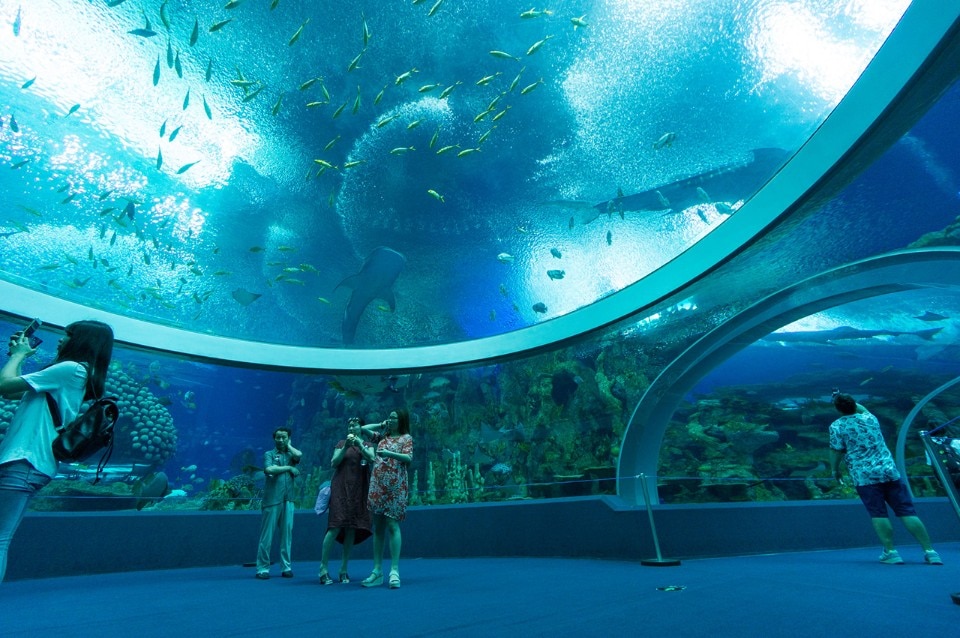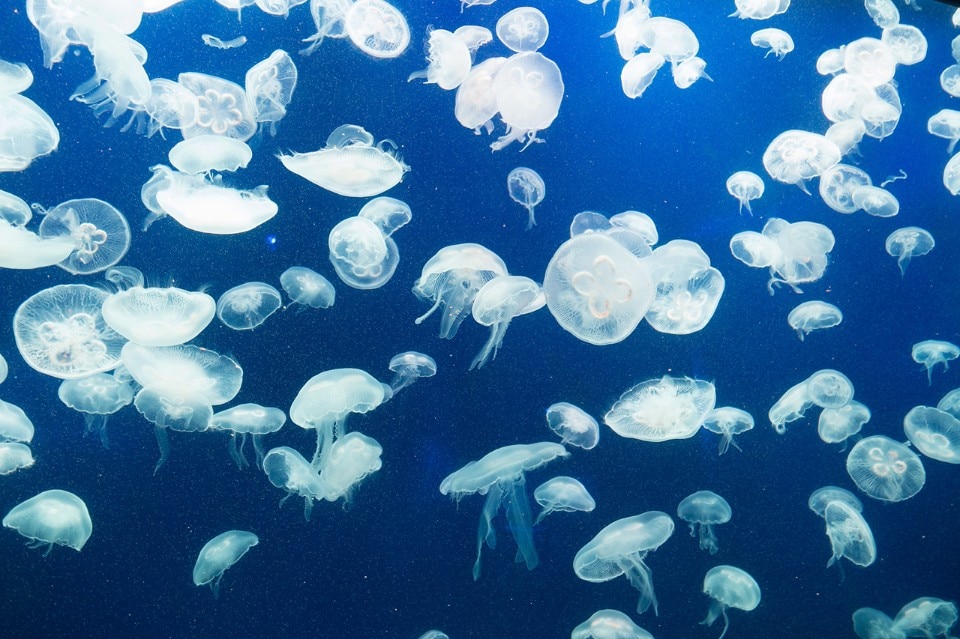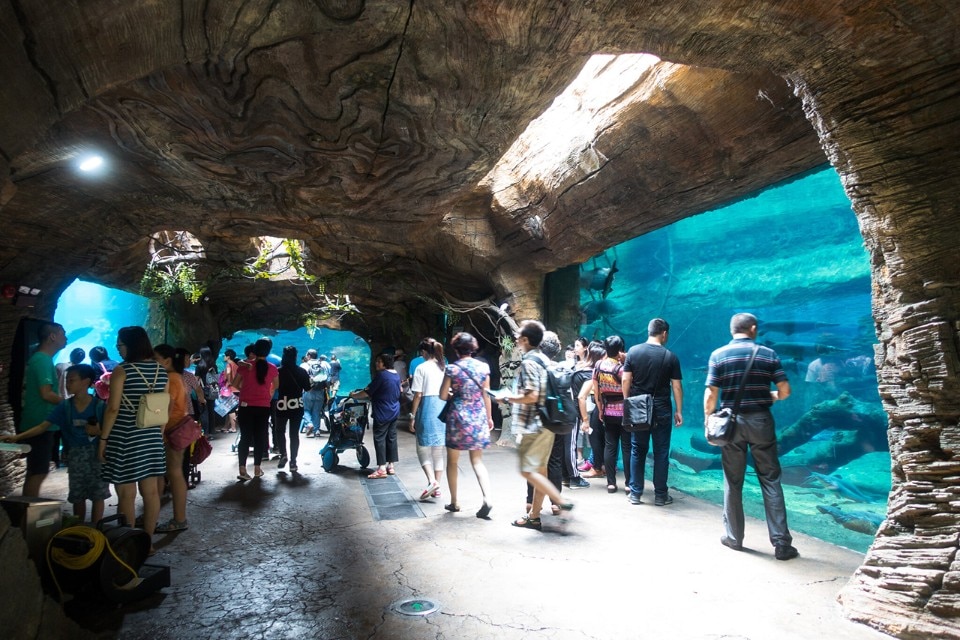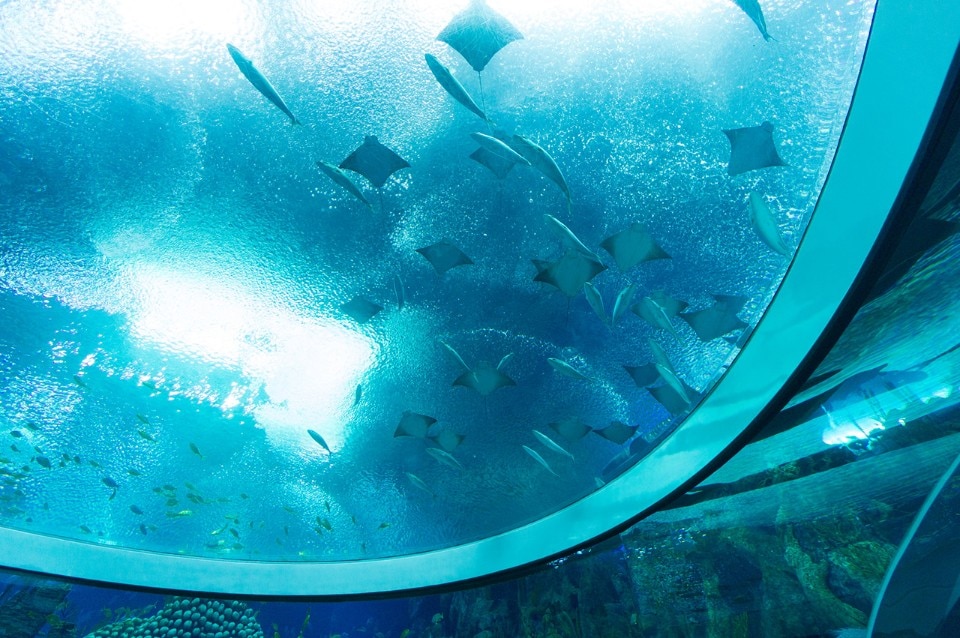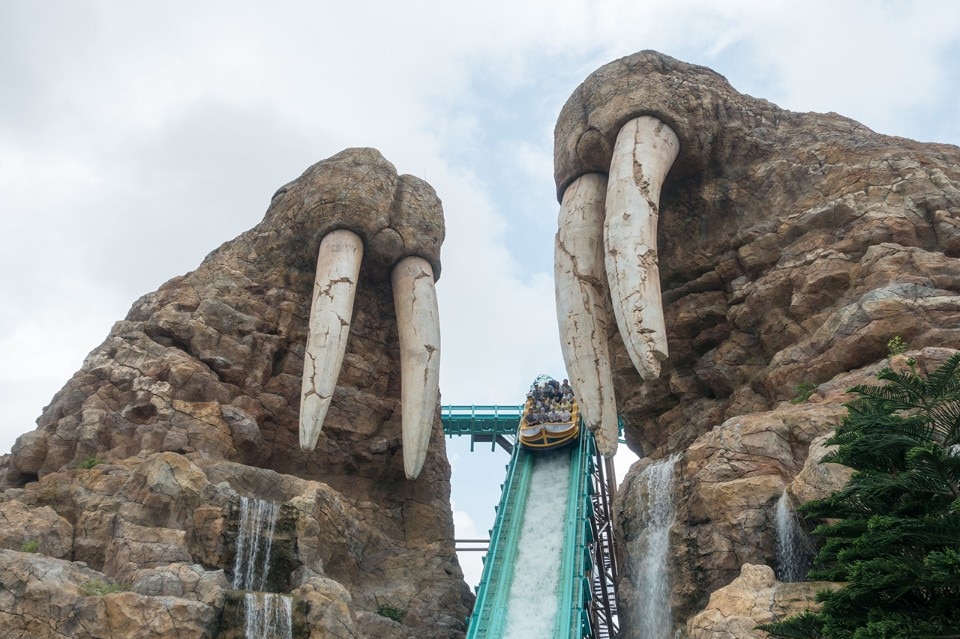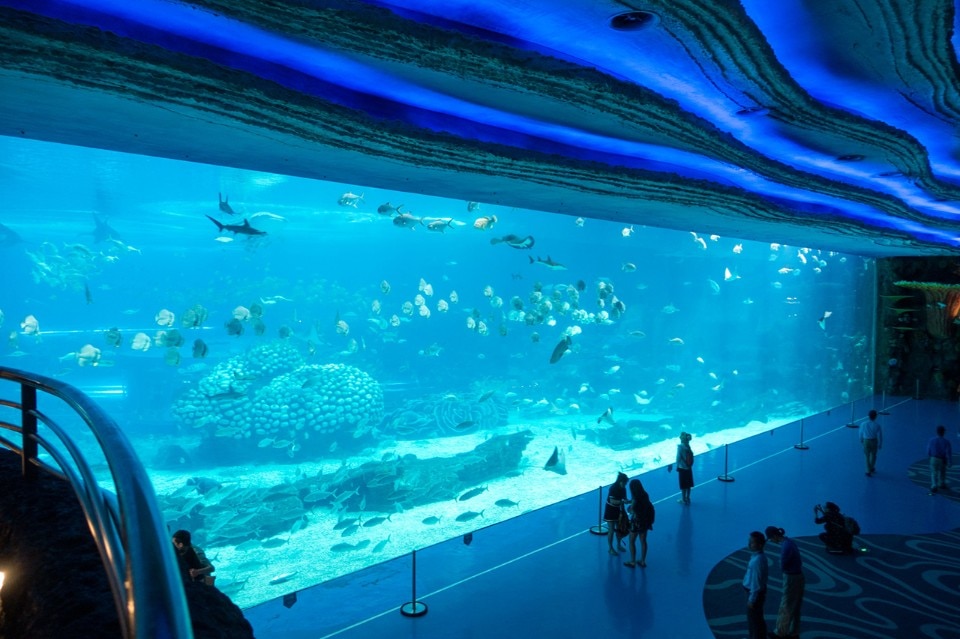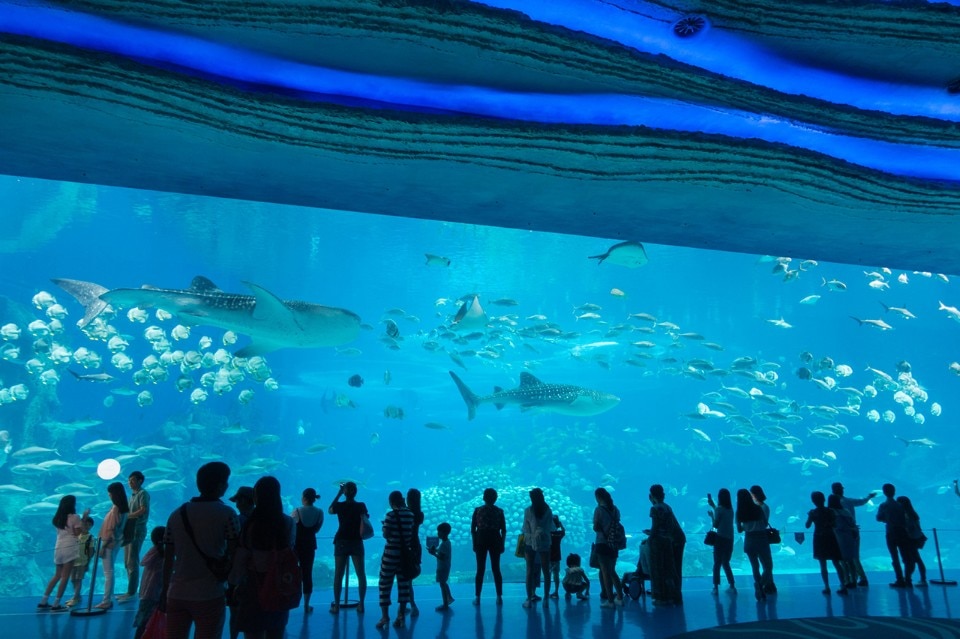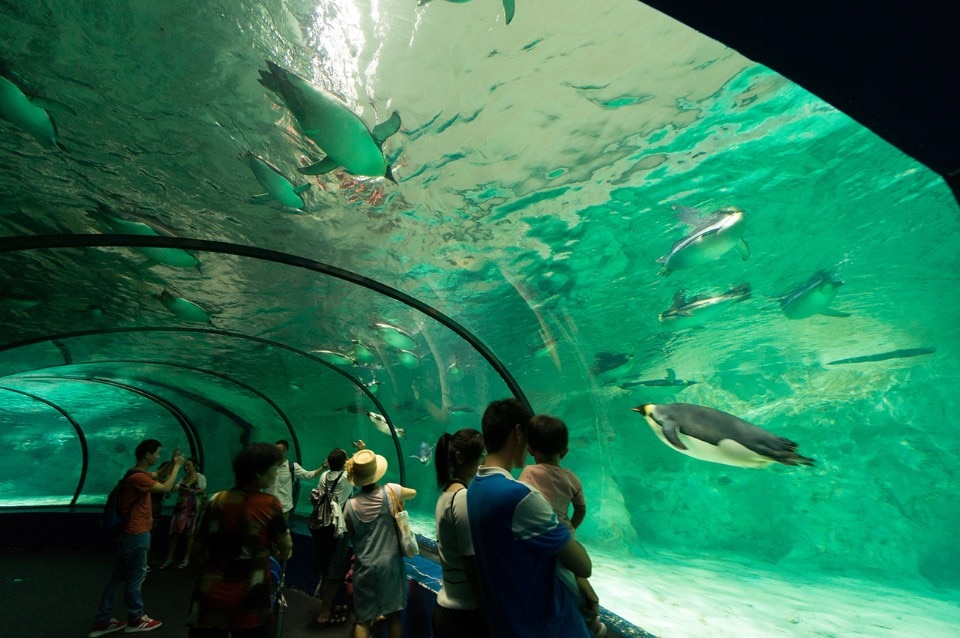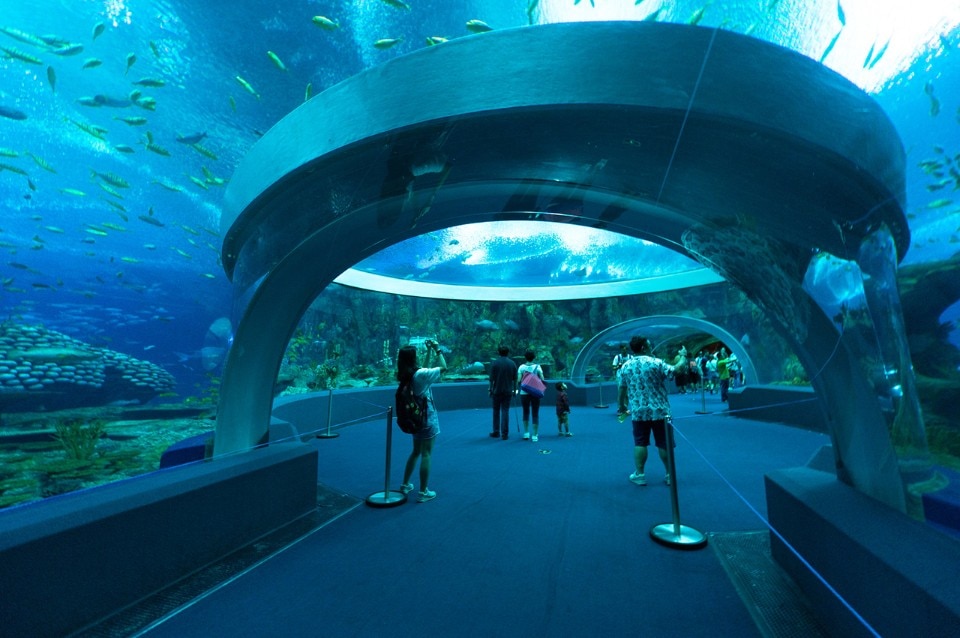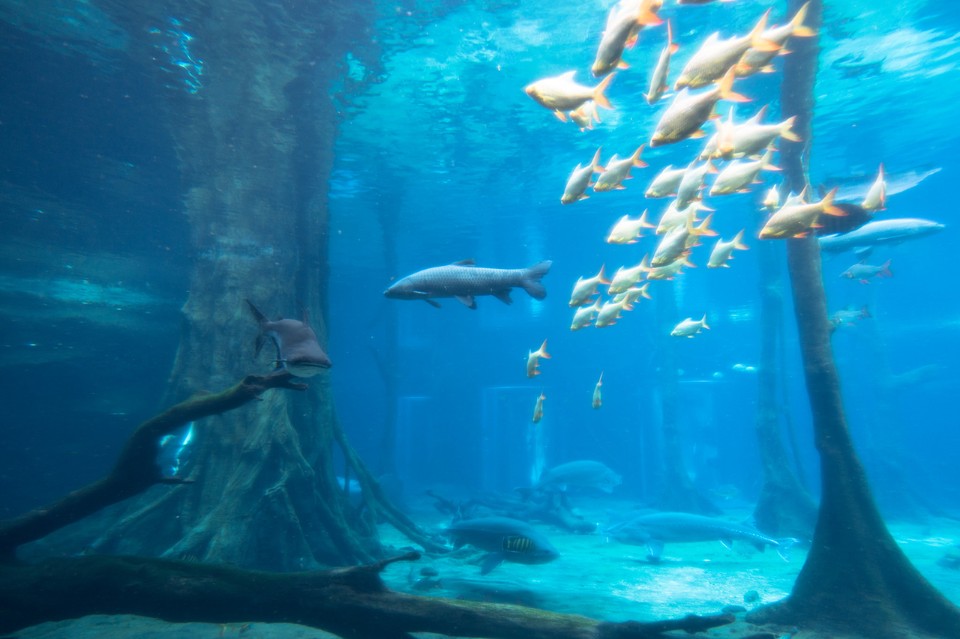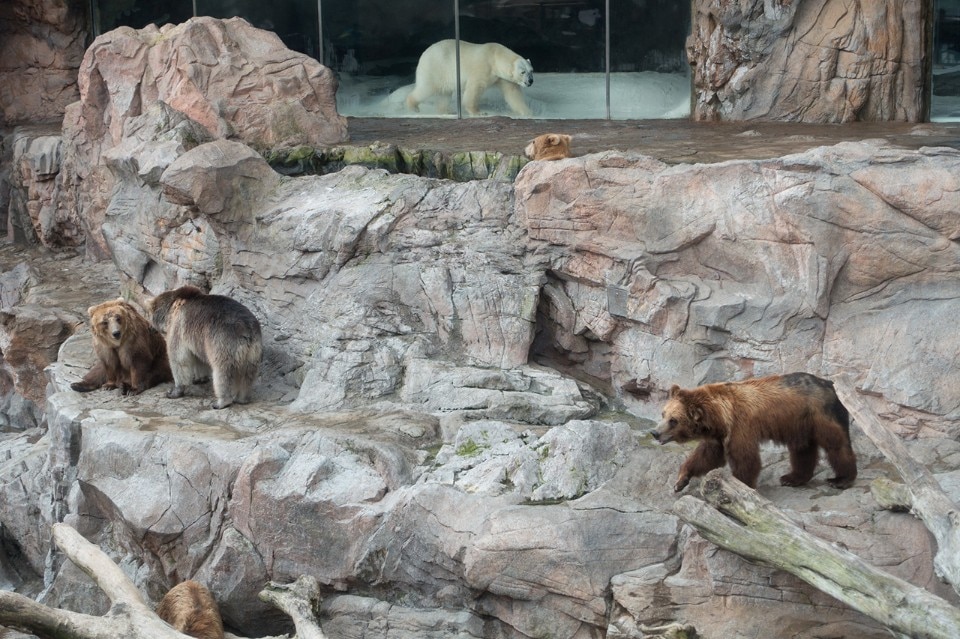With 48,750 cubic meters of water, the world's largest aquarium record is held by the ChimeLong Ocean Kingdom, located in Hengquin, China. The giant water park is part of the Chimelong International Ocean Resort, a seaside destination that aims to become "the Orlando of China": it is the twelfth most visited theme park in the world, with 8 million users a year.
Actually the ChimeLong Ocean Kingdom holds five records, all certified by Guinnes World Records. It's the largest aquarium in the world with almost 49 million litres of water, the sum of all the aquariums present, both fresh and marine. It features the largest acrylic panel in the world and the largest front view for an aquarium, given by the size of 39.6 x 8.3 m, with an area of about 330 square meters of acrylic; this is located in the Whale Shark Exhibit tank, the aquarium that houses the giant whale shark. The same tank holds another interesting record: the largest underwater dome that can be visited in the world, with a diameter of 12 meters. Finally, it contains the largest tank in the world, always the same, with 22.7 million litres of water.
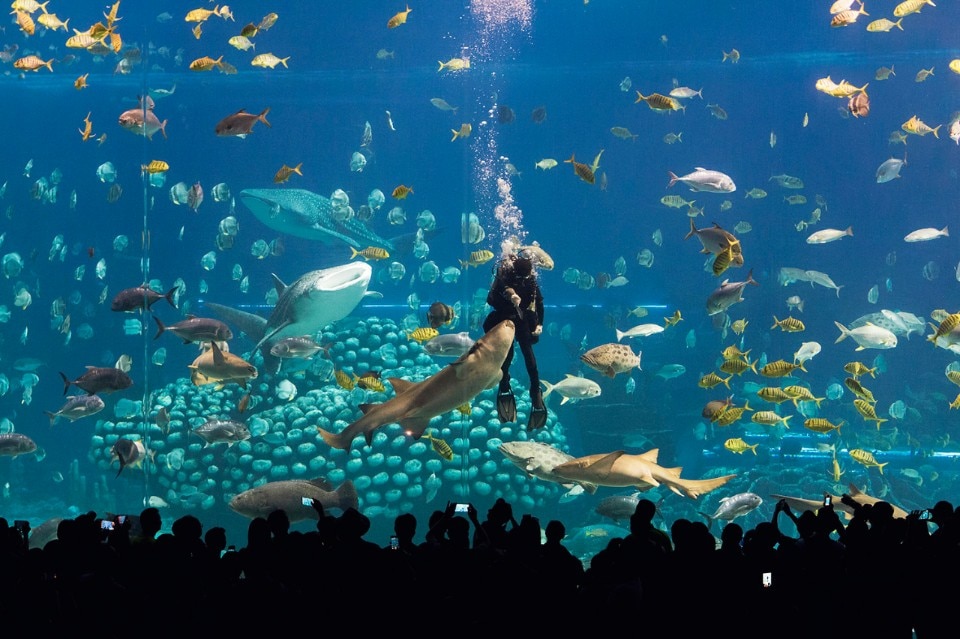
The aquarium is at the same time a great tourist attraction and the setting for studies and research by biologists and various researchers. Its function is to act as an intermediary between science and the general public, creating a context full of stimuli and suggestions that, with proper educational design, allows to attract, raise awareness and inform.
"Observing nature from close up allows us to better understand our world and learn how to preserve it," said designer, naturalist and photographer Takashi Amano. Their architecture can be conceived as a place that unites the urban and marine environment. In this spirit, in 2016, an aquarium ideas competition was launched in Long Island City11th Street Basin, New York, whose award-winning designs “challenge the relationship between city and waterfront, using the aquarium program as an opportunity to bring the city and its people close to the water in a new way compared to traditional parks and aquariums.”
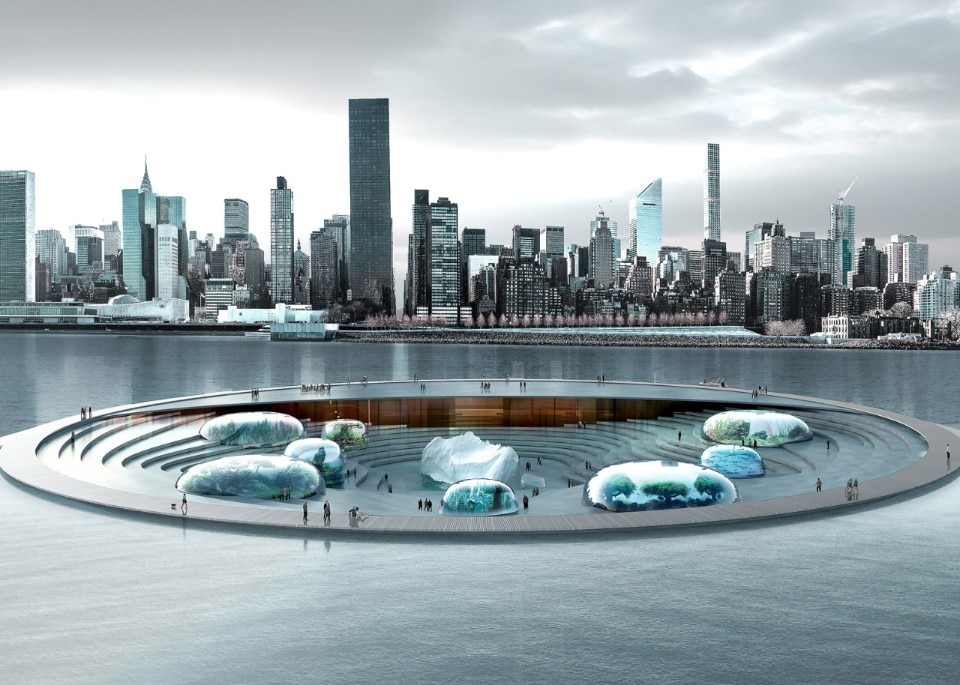
With the essay Blue urbanism: Exploring connections between cities and oceans, Timothy Beatley calls for a more complex link between the man-made and marine environments.“We live on an amazing marine planet, and the oceans influence our lives in more ways than we often realise: weather systems, food sources, even our modern, complex power and transportation systems rely heavily on ocean resources,” writes the American researcher. “And yet, we have virtually ignored oceans and marine environments in modern planning, policy, and design of cities. Even in the most progressive cities, planning is mainly focused on the beginning phases of climate-change sea level rise, and little more.”
Unfortunately, since its inauguration in 2014, the large water park ChimeLong Ocean Kingdom has often been criticised for its animal acquisition policies, which are often unclear and according to various rumours do not meet international standards. In an interview with Post Magazine, Samuel Hung Ka-yiu, president of the Hong Kong Dolphin Conservation Society, said: “[Ocean Kingdom] seem to have imported everything – whale sharks, polar bears, penguins. I would be interested to know where their bottlenose dolphins come from, too. They are doing everything wrong. They are doing everything you don't want them to do.”
According to the philosopher Donna Haraway, zoos and aquariums are the result of colonial explorations, conquests, and ultimately imperialism. The animal is “a subject made marginal and that become an object, the remnant of a world that is disappearing.” The American philosopher often draws from the marine world for her metaphors, hoping that man can conceive plots and relationships between human and non-human beings: “caught in the tangles of a reality that has more tentacles than an octopus, we become capable of feeling (attempting) the heterogeneous configuration of the world.” So what are aquariums? Prisons for aquatic animals or a tool to bring humans closer to a more complex knowledge of the global ecosystem?




